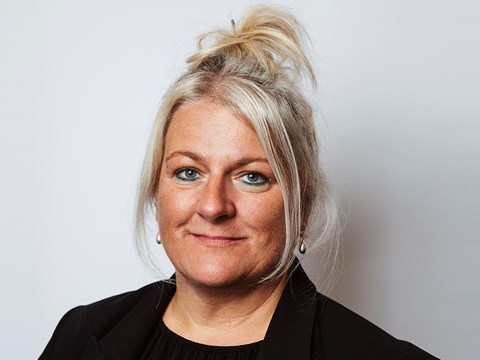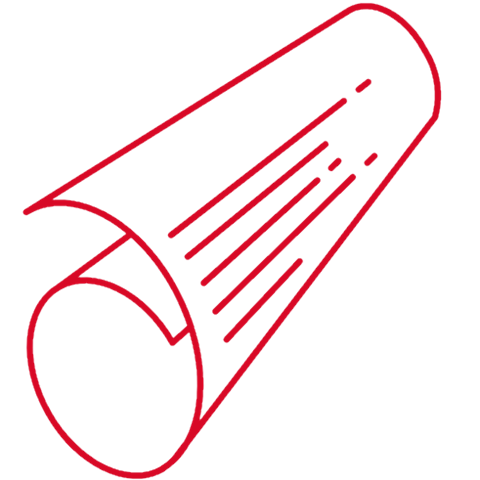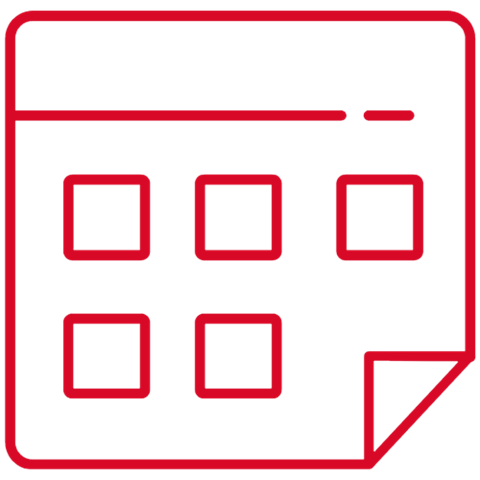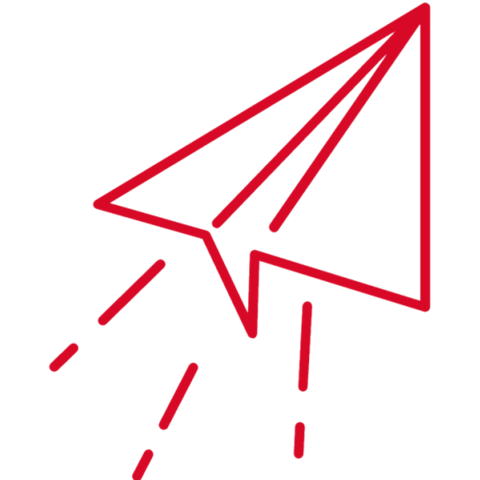Do we all give up too easily on existing relationships?
15 Jul 2024
People who have worked with me over the years know I always advocate win & retain in client: agency relationships. There is a time for the new, of course, but there are also times when the lure of the new is a red herring, an inefficient means of addressing known issues. Often, all you need to address the business and marketing challenge is a reset, a rekindle, a reboot.
After all, we don’t move house just because we are fed up with the decor. Instead, we inject some freshness. We rearrange and repurpose, try furniture in new places and declutter. We look at the space we have with new eyes to spot the opportunities we may have missed, and address a need or dissatisfaction. And we’re always adapting our homes to change; be it a nursery for a new baby, changing a bedroom into a study for home working or soundproofing the garage for the drum-loving (mature) teenager. As our lives change, our homes change with us.
From my perspective, there are huge parallels here in client: agency relationships, and I’m not alone in arguing that longevity has value. 73% of senior brand-side marketers agree that tenure delivers better results. But we need to ask ourselves what’s the stimuli, and how do we see positive resetting as a continuous motion and not just something we do in response to negative triggers when things go off the boil?
Unlocking every advantage of a long-term agency relationship requires us - both agency and brand - to work hard to find the pattern, rhythm and glorious moments that drive success. Those moments that seamlessly and deliciously add much-needed inspiration and bring positive friction to step change performance and result in fist-pumping ‘yes’s’.
What success looks like
Brands hire agencies for five key reasons:
- Specialist skills, expertise and capabilities
- Objectivity and different perspectives
- Ideas and new/different thinking
- Experience from other clients and categories to fast track and immediate learnings
- Means of adding additional/ temporary resource and capacity
A good agency/client relationship should consistently deliver on all the benefits above whether it is in year two, five or ten, and we only need to look around us to see how fantastically long-term relationships can perform commercially.
Consider Alex Best of Wonderhood Studio’s recent rallying cry for ‘long-term creative love’, where he highlighted Arla’s 17-year partnership with Wieden & Kennedy and Mother’s 14 years with IKEA. Their ’Food deserves Lurpak’ and ‘Wonderful every day’ campaigns are creatively inspired, and no one could argue with their sales results: IKEA’s UK sales have grown 67% over the last decade, while Lurpak is still our favourite butter.
Brands and agencies who have spent significant time working together have strong muscle memory of what works and crucial lessons learnt. These lessons from the past guide planning and ideation from a good place, and ensure cumulative effectiveness. When used right, this muscle memory drives the present in a way that hums and sings, effortlessly guiding to ensure everyone (and everything) is focused on what matters most.
The outcome is so good that it outweighs the inevitable not-so-good moments because - let's face it - nothing is ever perfect. After all, most clients are in transformation mode, which always brings challenges. But the foundations of these relationships are so solid that you just know this is one team working towards one ambition - and one very clear, very tight, very aligned, customer and commercially-focused agenda.
Encouraging positive friction
What you want from a long-standing relationship is an informed perspective and positive friction. It may sound counter-intuitive, but if everyone is agreeing with each other, that’s a bad sign. You want your agency to help your brand get better and deliver on targets and this takes energy, dynamism, debate, challenge, and enough friction that sparks fly.
Positive friction isn’t about argument for argument’s sake. It’s not about stubborn or defensive behaviours. It’s about listening and a depth of understanding, where an agency is so immersed in your brand, so deeply familiar with your challenges, and can deliver data, insights and ultimately solutions that are 100% relevant to you. And that's got to be continuous, not a one-off every once in a while or, indeed, a first-year wonder. So how does that happen? How do we nurture and embrace positive friction?
Keep curious
‘Useful distance’ between brand and agency ensures fresh perspective and objectivity, but too much distance can lead to frustration and misunderstanding. The LIONS State of Creativity 2024 report revealed that 45% of creative partners say the working relationships with their brand counterparts are difficult. This a clear demonstration of why the gap between brand and agency mustn’t grow so wide that it feels like “us and them” rather than “we”.
This is partly on the agency, of course. They need to ask questions, be curious, and relentless about understanding your internal and external dynamics.
But brands also need to provide the right stimuli, opportunity, and access. It's crucial to carve out time to help our agencies connect to the reality of our business, considering data, insights, real-time results, operational strategy, and customer feedback.
Seek out blocks and barriers
In my experience, it's also crucial to have a regular forum away from the day-to-day where everyone can discuss the issues which are barriers to breakthroughs.
Consider this repetitive complaint I hear pretty frequently during our reset interventions about what's going wrong.
Client feedback: ‘They never suggest new things. We never know what's worked.’
Agency feedback: ‘They always want tried and tested ideas. We rarely get objectives.’
Hmm. Spot the problem.
- Recommendation can't happen without evaluation.
- Evaluation can't happen without measurement.
- Measurement certainly can’t happen without something to measure - aka smart objectives. And not the ‘kitchen sink’ variety.
We all know how easy it is for ‘non-urgent’ items to fall off the agenda but, as I recently read somewhere, “you can’t connect the dots, unless you collect the dots”. If we are not (consistently) giving our agencies what they need to do their best work (consistently) then we’re limiting their chances of succeeding. And the need for connection doesn’t end there.
Work to a shared ambition
Some people call it partnership, some people call it mutuality. Others describe it as collaboration. Whatever your terminology, it’s essential to recognise that, whilst the ambition may change and evolve over time, the need for it to be a shared one never changes. Staying aligned is critical to shared success.
Keeping up the conversation and focusing on your shared ambitions, both commercially and creatively, is key. Why? Because it steers what needs to change next. It brings focus to a continuous improvement path. It drives the next course correction. Because if you are not changing and evolving in step with each other, then in effect you are drifting, and already on a path to becoming misaligned.
Checking alignment is easy. Ask everyone who works with the agency to write two sentences. The first is a summary of the ambition for the agency relationship. The second is a summary of the ambition for the work. Compare and assess: 50%, 75% or 100% aligned. Then ask your agency for their view.
The outcome of this exercise is to get to that shared place, that shared goal that all can use to grapple with the inevitable tricky moments. It is this alignment which enables you as the client to confidently say “Things may be tough, painful and frustrating, but I trust this agency, and I trust what they are going to deliver for me, because we have a shared ambition and shared goals.”
So how do you achieve this?
Course Correct Early: The first course correct should come no later than the first 100 days. So much happens at the start of a new brand/agency relationship, and there’s a lot of room for assumptions, expectations and blind spots to emerge that could prevent all from delivering what they had imagined.
Embed Wash-Ups into Your Culture: I can’t stress enough how vital it is to embed wash-up programmes into your ways of working. Wash-ups at the end of any piece of work shouldn’t be treated as an option - they are just as important as proper briefing. You can only diagnose where and how a relationship is going (or has gone off) track if you are keeping track.
Your People Have the Right Skills: Is everyone in your team skilled enough to manage and drive successful agency relationships? There is an acute difference between managing suppliers and developing an effective partnership. Ask yourself:
-
- Are your people exhibiting great behaviour in managing their agencies and in-house teams?
- Do they manage for success or for delivery on time and on budget?
- Is the focus inputs or outputs and outcomes?
- Is the quality of briefing improving or getting worse? Over time, are assumptions being made that damage clarity?
Managing agencies is a skill that isn’t often focused on, trained or discussed, but upskilling your teams in this area is crucial. You can’t get the best if you don’t give your best.
Recognise when to Reset: Has the gap between brand and agency grown too wide? Then it’s time for a proactive reset, where there is a framework created and delivered against. It’s never too late to save a relationship… until it is.
Change is constant. What doesn’t change, however, is the goal of creating great work; and to achieve this, we all need to use the expertise, capability and knowledge we have in our toolbox to the best effect, both internally and externally.
That’s why this is the moment to supercharge your existing agency relationships. Invest time, passion and energy into them, with them, working hard together. Give your best to get the best. After all, who doesn’t want better work, more of the time? Who doesn’t want to work together as one team, attacking challenges, delivering results and feeling unbelievably proud of the work that has been created? Who wants to waste talent, or reinvest unnecessarily in a 3-month pitch and then an onboarding period?
Why move house when where you are right now has oodles of potential just waiting to be unleashed? The home you’ve always wanted, evolving and changing with you as your needs change. Now that’s a long-term partnership worth nurturing, protecting, investing in and, when times get tough, definitely worth fighting for.
Who's with me? All positive friction comments appreciated.
Come and have a chat - email vgillan@aargroup.co.uk.

About The Author




